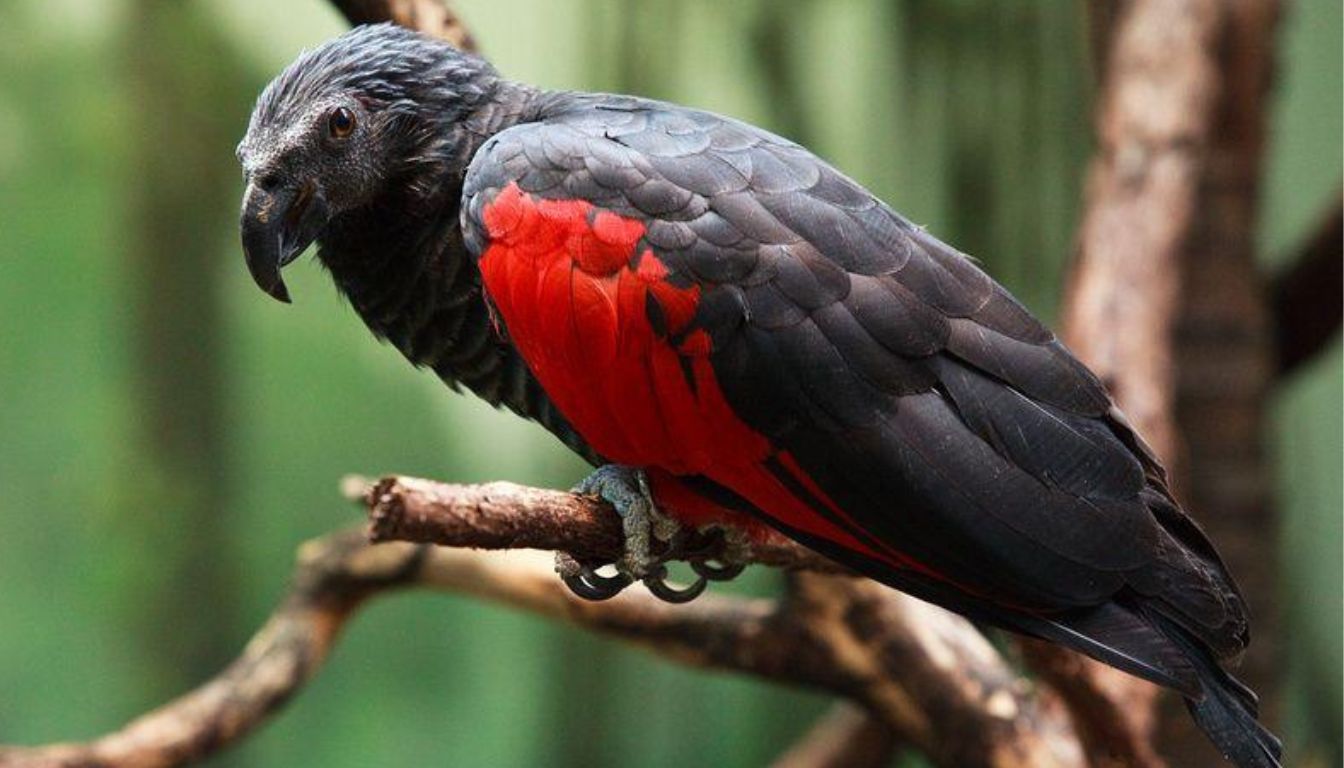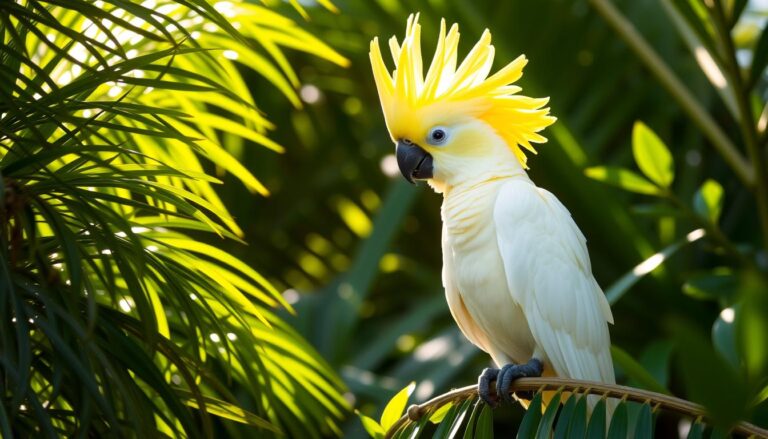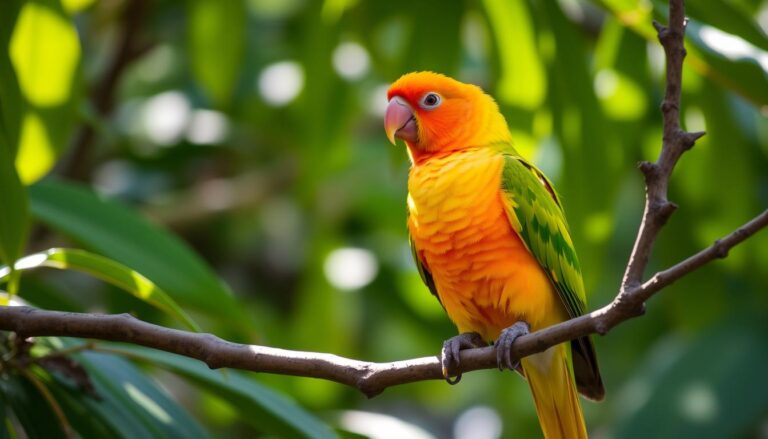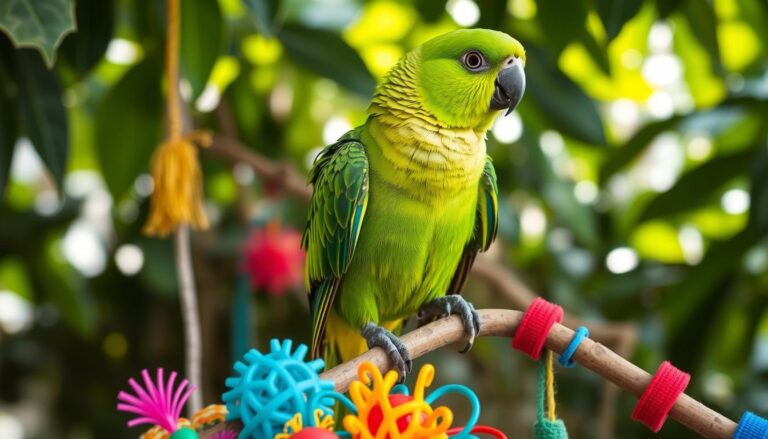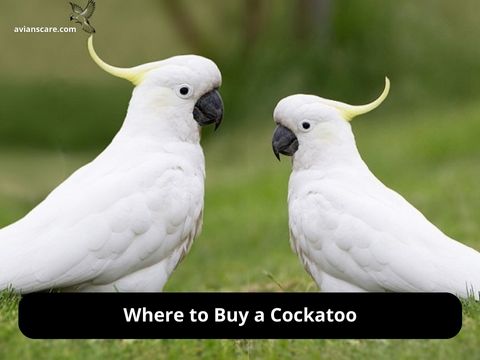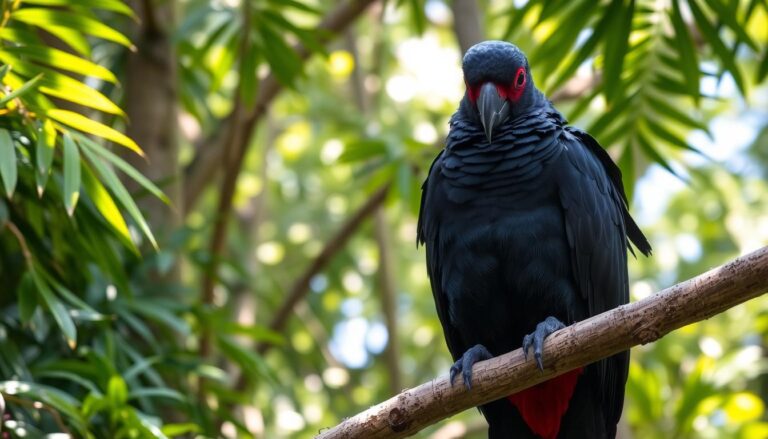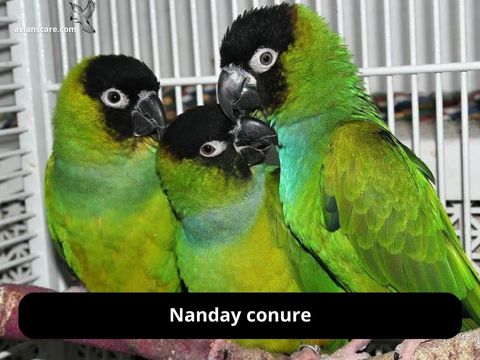Dracula parrot lifespan, size and price
The Dracula parrot, also known as the Pesquet’s parrot or vulturine parrot, is a large parrot species. It has a distinctive goth-like appearance.
Its lifespan can range from 20 to 40 years in the wild. This makes it a long-term companion for those who consider getting one.
This article will explore the Dracula parrot’s lifespan, size, and price. It aims to provide a detailed guide for those interested in this unique species.
Size and Lifespan
The Dracula parrot is one of the largest parrot species. They reach sizes that make them a striking presence in any aviary or as pets.
Understanding the needs and characteristics of the Dracula parrot is key to providing the best care.
Introduction to the Mysterious Dracula Parrot
The Dracula parrot is a fascinating bird found only in New Guinea. It lives in different places like foothills, hills, mountains, and rainforests. Its home is full of different plants and animals.
This parrot stands out because of its unique look. It has a bald head, a long curved beak, and a red belly. It’s a bird that catches the eye.
But, the Dracula parrot is in trouble. It’s vulnerable because of lost habitats and hunting for its feathers. We need to work hard to save this amazing bird.
The Unique Physical Characteristics of Dracula Parrots
The Dracula parrot stands out with its bald head, long curved beak, and bright red belly. These traits make it a favorite among parrot lovers.
Dracula parrots are about 46 cm long and weigh 680-800 grams. This makes them a medium-sized parrot. Their size is a big part of what makes them special.
Their bald head is a key feature of Dracula parrots. Their long, curved beak helps them find and eat food. The bright red belly adds to their beauty.
Compared to other parrots, Dracula parrots are medium-sized. Their size and unique features set them apart from others.
Understanding the Dracula parrot’s size, weight, and features helps us see what makes them unique. This includes their bald head, long beak, and bright red belly.
Understanding Dracula Parrot Size Specifications
The Dracula parrot is a medium-sized bird. It grows to about 46 cm long and weighs 680-800 grams. Compared to birds like the African Grey parrot, Dracula parrots are sturdy and eye-catching.
It’s important to know the Dracula parrot’s size. This includes its average adult size, weight range, and how it compares to other parrots. This knowledge helps in providing the best care and management for these birds.
Expected Dracula Parrot Lifespan in Captivity
The Dracula parrot can live from 20 to 40 years in the wild. In captivity, it can live a similar amount of time. With the right care, these birds can live long, healthy lives.
Many things affect how long a Dracula parrot lives in captivity. Diet, environment, health, and care quality are key. A balanced diet is vital for their health.
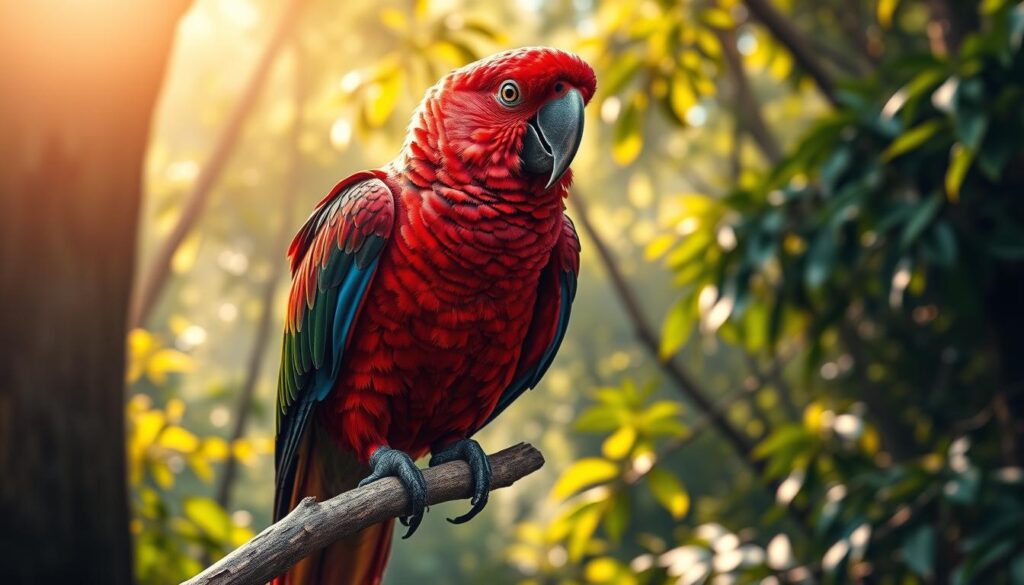
Creating a natural environment is also important. They need enough space, the right temperature, and humidity. Their enclosure must be safe and escape-proof.
Regular vet visits and good health care are essential. They help catch and treat health problems early. This keeps the parrots healthy and happy for a long time.
Key factors influencing Dracula parrot lifespan in captivity include diet, environment, and health care.
Natural Behaviors and Personality Traits
## Natural Behaviors and Personality Traits of Dracula Parrots
### Social Nature
Dracula parrots are very social. They live in groups in the wild, which is key to their personality. They love to interact with each other, showing complex behaviors like foraging and nesting.
### Intelligence Level
Dracula parrots are among the smartest parrot species. They can solve problems and learn from their experiences. Their intelligence shows in their tool use and complex behaviors.
### Interaction with Humans
In captivity, Dracula parrots are friendly and engaging. They bond strongly with their owners, showing affection like preening and vocalizing. They can even recognize and respond to human cues.
Understanding Dracula parrots’ social nature, intelligence, and human interaction helps owners care for them better. It shows why these birds are such unique and appealing pets.
Dietary Requirements and Nutrition
Dracula parrots love to eat fruits. They need a mix of fresh fruits, veggies, and special parrot pellets in their diet.
- Figs: Rich in fiber and antioxidants, figs are a favorite among Dracula parrots.
- Mangoes: High in vitamins A and C, mangoes provide essential nutrients.
- Berries: Various types of berries, such as strawberries, blueberries, and raspberries, are consumed by Dracula parrots.
Dracula parrots also enjoy a variety of vegetables. These include:
- Leafy greens: Kale, spinach, and collard greens are rich in vitamins and minerals.
- Carrots: High in vitamin A, carrots are a nutritious addition to their diet.
It’s important to include a high-quality parrot pellet in their diet. These pellets offer a balanced mix of nutrients, vitamins, and minerals.
Housing and Space Requirements
Dracula parrots need a big, well-made enclosure to be happy. It’s key to give them enough room and a good place to live.
Cage Specifications
The cage size is very important for Dracula parrots. They need a cage that’s at least 2x3x4 feet. The bars should be about 1 inch apart to keep them safe.
The cage must be big enough for the birds to fly and move around. This lets them exercise and have fun.
Environmental Needs
Dracula parrots need a lot of space to fly, climb, and play. A big aviary or cage with lots of perches and toys is best. This keeps them entertained and happy.
Exercise Requirements
Dracula parrots need to exercise a lot for their health. Give them toys, climbing spots, and things to find food. They should fly and play for 2-3 hours every day.
In short, Dracula parrots need the right home to be happy. Knowing what they need for a cage, environment, and exercise helps you give them a great life.
Health Care and Medical Considerations
Dracula parrots can face health problems like respiratory issues and feather plucking. Regular vet visits and a healthy diet are key to keeping them well. This helps ensure their health and happiness.
Many things can impact a Dracula parrot’s health. These include their genes, what they eat, their living space, and how old they are. A diet full of important nutrients is vital. A clean, safe home also helps prevent sickness.
It’s important to have your Dracula parrot checked by a vet often. A vet who knows about parrots can spot health problems early. This means they can get the right treatment quickly.
To keep your Dracula parrot healthy, feed them well and keep their home clean. Also, make sure to take them to the vet regularly. By doing these things, you can help your parrot stay healthy and happy.
Legal Considerations for Ownership
Having a Dracula parrot is a big deal. You need to know the legal stuff. Dracula parrots are protected by laws worldwide.
Permits and Regulations
In many places, Dracula parrots are seen as vulnerable. Their sale and ownership are watched closely by laws. You might need special permits to have one.
These rules change from country to country. Some places have strict laws to protect these birds. Others are more relaxed.
Geographic Restrictions
Where you can buy a Dracula parrot also matters. Some countries don’t let you have them. Others might, but with rules.
Some areas have laws against owning exotic birds. This includes Dracula parrots. You should check your local laws before getting one.
Knowing the legal side helps you decide if you can own a Dracula parrot. It’s also important to think about the bird’s safety and the laws protecting it.
Dracula Parrot Price Range and Factors
The Dracula parrot is rare and exotic. Its price changes based on several factors.
Initial Purchase Cost
The cost to buy a Dracula parrot varies. It can be between $1,000 and $5,000. This depends on the bird’s age, sex, and color.
Younger birds and those with bright colors cost more. The bird’s sex also affects the price. Some breeders charge more for certain sexes.
Ongoing Care Expenses
There are ongoing costs to consider. These include food, toys, and vet care.
Keeping a Dracula parrot costs a lot. You’ll need to pay for a balanced diet, a big cage or aviary, and regular vet visits.
Think about these costs before getting a Dracula parrot. They can greatly affect the total cost of owning one.
Where to Find Dracula Parrots for Sale
Looking to buy a Dracula parrot? It’s important to find a reliable seller. You can find them online or in local stores. Online marketplaces, specialty pet stores, and avian breeders are good places to start.
| Source | Description |
|---|---|
| Online Marketplaces | Specialized online platforms that sell birds and avian-related products. |
| Reputable Breeders | Breeders who are registered with relevant avian organizations or associations. |
| Specialty Pet Stores | Stores that sell birds and avian-related products, and may carry or order Dracula parrots. |
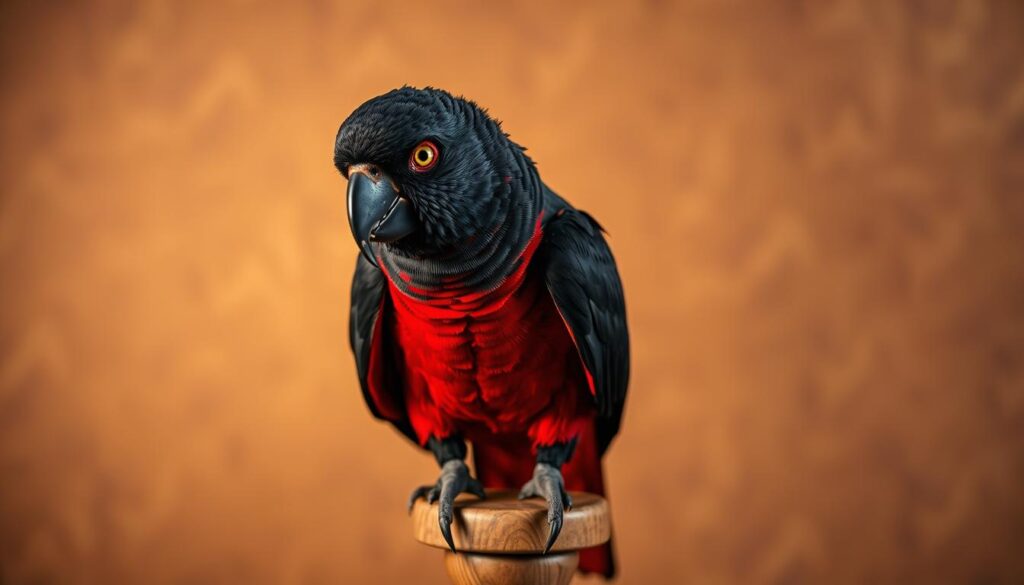
Training and Socialization of Dracula Parrots
Training and socialization are key aspects of Dracula Parrot care. These birds are intelligent and can learn tricks and commands with positive reinforcement. It’s important to start training early and be consistent in your approach.
Positive reinforcement is the best method for training Dracula Parrots. Reward them with treats, praise, and affection when they perform the desired behavior. Avoid punishment or negative reinforcement, as it can create fear and mistrust.
Dracula Parrots are social birds and thrive on interaction. They enjoy the company of their owners and can form strong bonds. Spend quality time with your Dracula Parrot, engaging in activities such as playing, cuddling, and simply enjoying each other’s company.
It’s important to socialize your Dracula Parrot from an early age. Introduce them to new people, environments, and other birds to help them become well-adjusted and confident. Gradually increase exposure to new stimuli to prevent overwhelming them.
Remember, every bird is different, and some may require more time and effort to train and socialize. Be patient and understanding, and always prioritize their well-being and happiness.
Training Tips for Dracula Parrots:
- Start training early and be consistent.
- Use positive reinforcement techniques such as treats and praise.
- Be patient and understanding, as every bird is different.
- Provide a variety of toys and activities to keep them mentally stimulated.
- Encourage socialization by introducing them to new people and birds.
Socialization Tips for Dracula Parrots:
- Introduce them to new people and environments gradually.
- Provide a safe and comfortable space for them to interact with others.
- Encourage play and interaction with toys and other birds.
- Be present and engage with your Dracula Parrot during socialization activities.
- Monitor their behavior and body language to ensure they are comfortable and happy.
Common Health Issues and Prevention
The Dracula parrot is known for its bright colors and special traits. But, it can face health problems that need care and prevention. Knowing about these issues and how to prevent them is key to keeping these birds healthy.
Regular Health Checks
It’s important to have regular health checks for Dracula parrots. A vet who knows about birds should do these checks. They help find health problems early and keep the bird healthy.
Disease Prevention
Stopping diseases is a big part of caring for Dracula parrots. A good diet, a clean home, and vet visits can stop many health problems. Owners should talk to their vet to prevent health issues and keep their parrot well.
Breeding and Reproduction Information
The Dracula parrot is known for its bright colors and special traits. Understanding their breeding habits and cycles is key for owners and breeders.
In the wild, Dracula parrots breed, but their numbers are small due to their endangered status. Efforts to save these birds include managing their breeding in captivity.
Breeding programs for Dracula parrots are set up in controlled environments. These programs help keep the species’ genetic diversity high. They also prevent inbreeding and ensure the birds’ health.
The reproductive cycle of Dracula parrots is complex. It’s affected by things like their environment, diet, and health. In captivity, breeders use controlled programs to increase the chances of successful breeding.
Knowing the breeding and reproductive needs of Dracula parrots is vital. This knowledge helps in making the right decisions about their care and management.
| Breeding Aspect | Description |
|---|---|
| Breeding Habits | Dracula parrots breed in the wild, with a complex reproductive cycle influenced by environmental factors. |
| Reproductive Cycle | The reproductive cycle is managed in captivity through controlled breeding programs. |
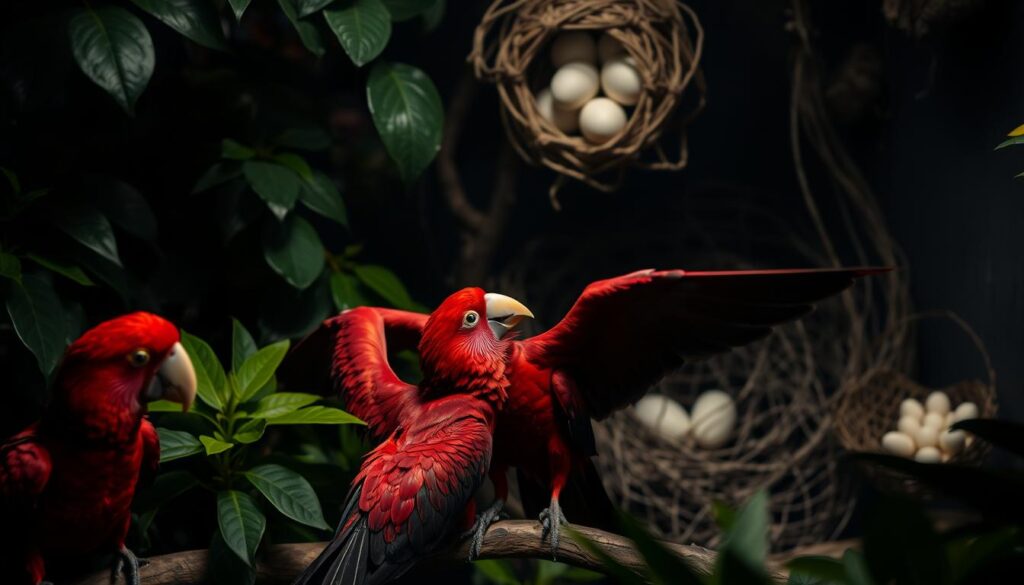
By following these guidelines, you can create a detailed section on Dracula parrot breeding and reproduction.
Daily Care and Maintenance Needs
Dracula parrots need a balanced diet, regular grooming, and a clean home to thrive. It’s key to provide the right care for their well-being and long life.
Feeding Schedule
Dracula parrots need a varied and nutritious diet. They should eat fruits, vegetables, and parrot pellets, with some treats. Include fresh fruits like apples, bananas, and berries, and leafy greens like kale and spinach. Pellets are important as they are nutritionally balanced.
Limit foods high in fat and sugar. Avoid avocado, chocolate, and other toxic foods. Always have fresh water available and change it often to keep it clean.
Grooming Requirements
Regular grooming is essential for Dracula parrots’ health and looks. This includes trimming nails, maintaining the beak, and caring for feathers. Trimming nails prevents discomfort and health issues. Beak maintenance keeps it in shape and function.
Feather care means keeping the parrot’s plumage clean and well-maintained. A clean environment, enough space, and low stress help prevent feather plucking and behavioral problems.
Making an Informed Decision About Dracula Parrot Ownership
Owning a Dracula parrot is a big responsibility. It needs careful thought and planning. You’ve learned they have special needs and requirements.
Before deciding to bring one home, understand the challenges. Know what owning this exotic species means.
Deciding to own a Dracula parrot means knowing their needs well. This includes a good environment, balanced diet, and understanding their behavior.
Also, be aware of the legal side of owning a Dracula parrot. You’ll need permits and must follow local laws.
By thinking about these things and being ready to care for them, you can decide if owning a Dracula parrot is right for you. With the right knowledge, you can enjoy these fascinating birds responsibly.

